Dealer Raquelle Azran Wants Americans to Look Past Their ‘Unhappy History’ With Vietnam to Embrace Its Rich Contemporary Art Scene
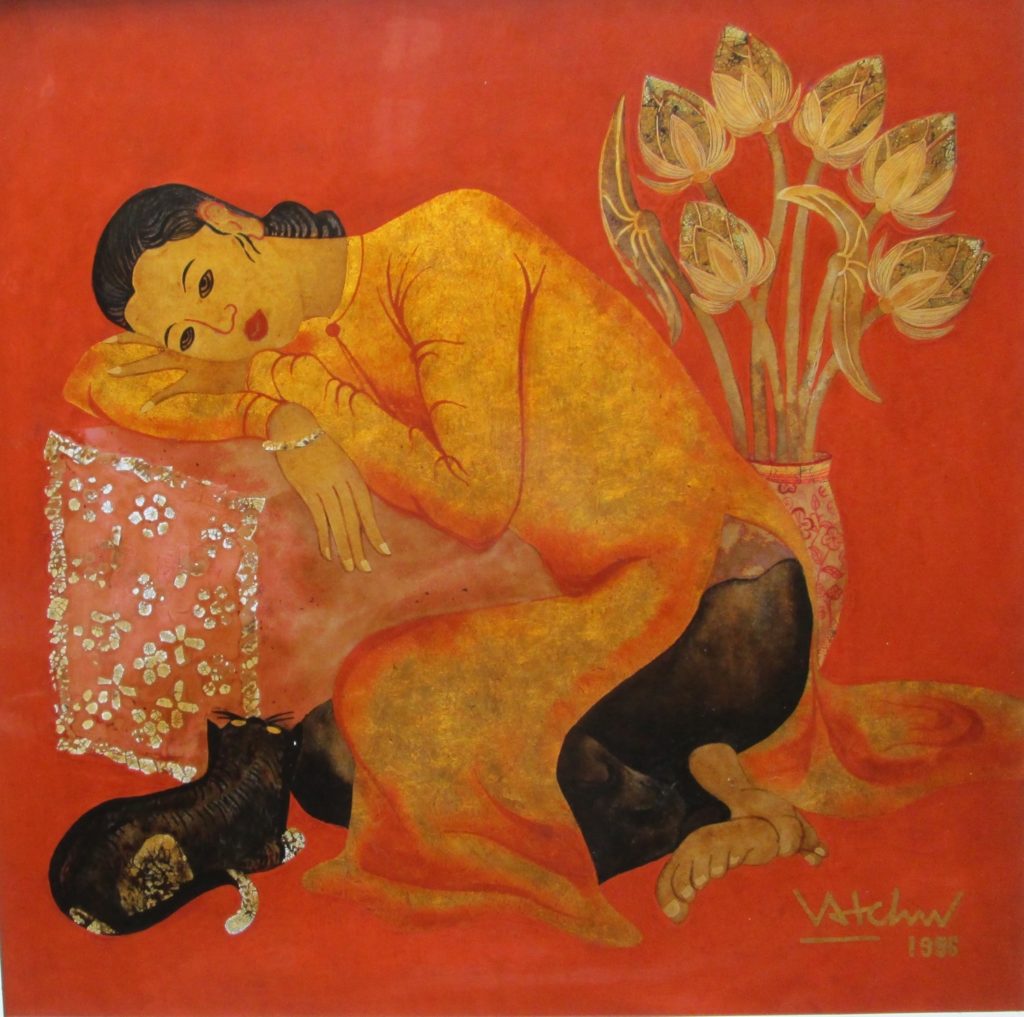

Artnet Gallery Network

The market for contemporary Vietnamese art has never really blossomed in the US the way it has in Europe and Asia. “America is still coming to terms with its unhappy history in Vietnam,” says dealer Raquelle Azran, who has specialized in Vietnamese art for more than 25 years. “Americans still identify the country primarily with images of war, and therefore Vietnamese fine art has had to overcome a psychological threshold of lingering unease in American collectors.”
But Azran is trying to change that. The dealer, who was born in New York, moved to Vietnam in the early 1990s—an experience that changed her life and her approach to art. Today, she splits her time between the US, Vietnam, and Israel, and does the majority of her business on the fair circuit. This fall, you can find her in the UK at Asian Art London (November 3-10) and in Germany at the Hamburg Art Fair (November 14-18).
“I am optimistic that quite soon Vietnamese art will be appreciated in the US as it is in Europe—on its own considerable merits, without the distracting filter of what the Vietnamese term ‘the American War.’”
Azran spoke with artnet News about her path to discovering Vietnamese art and how she plans to bring it to new audiences.
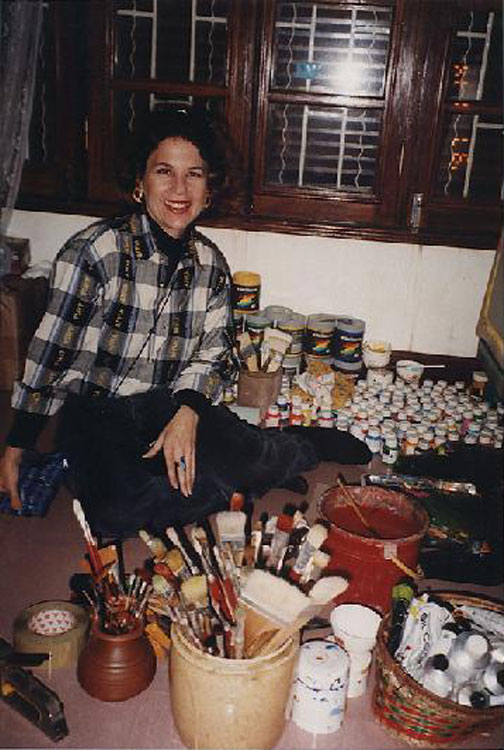
Raquelle Azran of Raquelle Azran Vietnamese Contemporary Fine Art.
When did you first fall in love with Vietnamese art?
I came to art and curating as a second career. One of the reasons I left the US was the dissonance between my generation and the US establishment that waged the war on Vietnam. Although I had traveled widely and lived abroad for many years, crossing the border into Vietnam was an experience on a different level, and the beginning of a love story between the country and myself. I’ve developed an enormous respect for Vietnam, its people, and the art.
As one of the first wave of Americans to enter Vietnam in 1991—thanks to the Open Door policy—I had the great fortune of gaining entrée into the art world of Hanoi, where Vietnamese fine art was born and developed, beginning with the establishment of the Fine Arts School of Indochina by French colleagues of Matisse, in 1925. I spent time with the artists in their homes and studios, speaking at first in French with the older generation, and later, after many hours of study, in Vietnamese. I was accepted so graciously by the people, even though both my parents’ countries—the US and France—had invaded their land.
A first encounter with Vietnamese art evokes surprise as well as delight. Familiar mediums—oil, gouache, and watercolor—join with distinctly Asian motifs and spatial concepts. This unique blend of Eastern and Western sensitivities—including the juxtaposition of handmade rice paper and traditional lacquer painting with modernist artistic techniques of Impressionism, Expressionism, Cubism, and Fauvism—bridges the temporal worlds of past, present, and future and spans the cultural divide of East and West.
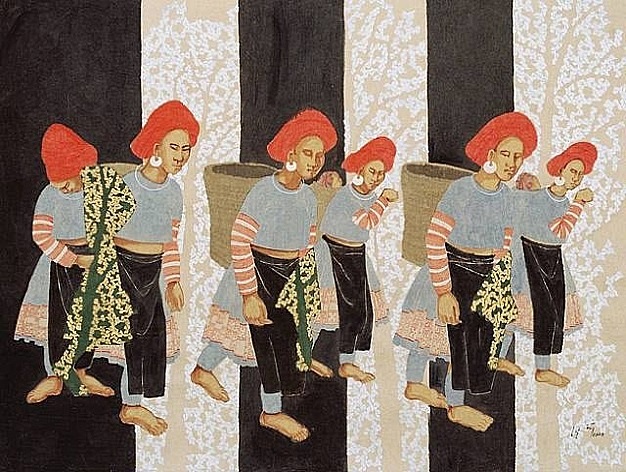
Dinh Thi Tham Poong, March of Time (2008). Courtesy of Raquelle Azran Vietnamese Contemporary Fine Art.
In your mind, who are some of the most exciting contemporary Vietnamese artists working today?
Following the Vietnamese tradition of respecting elders, I would like to begin by mentioning a few of the renowned artists who are no longer alive, but whose works I collect: Nguyen Tu Nghiem, Luu Cong Nhan, Tran Huu Chat, and Hoang Tich Chu. Older artists still working and producing beautiful work include Phung Pham and Ngo Van Duyen. There is also an amazing generation of mid-career female artists, including Vu Thu Hien and Dinh Thi Tham Poong, whose works narrate the cultural and spiritual beauty of Vietnam. Two male Hanoian artists, Vu Duc Trung and Vu Dinh Tuan, illustrate the power of utilizing historical mediums such as lacquer on wood and watercolor on silk in exciting and breathtaking ways.
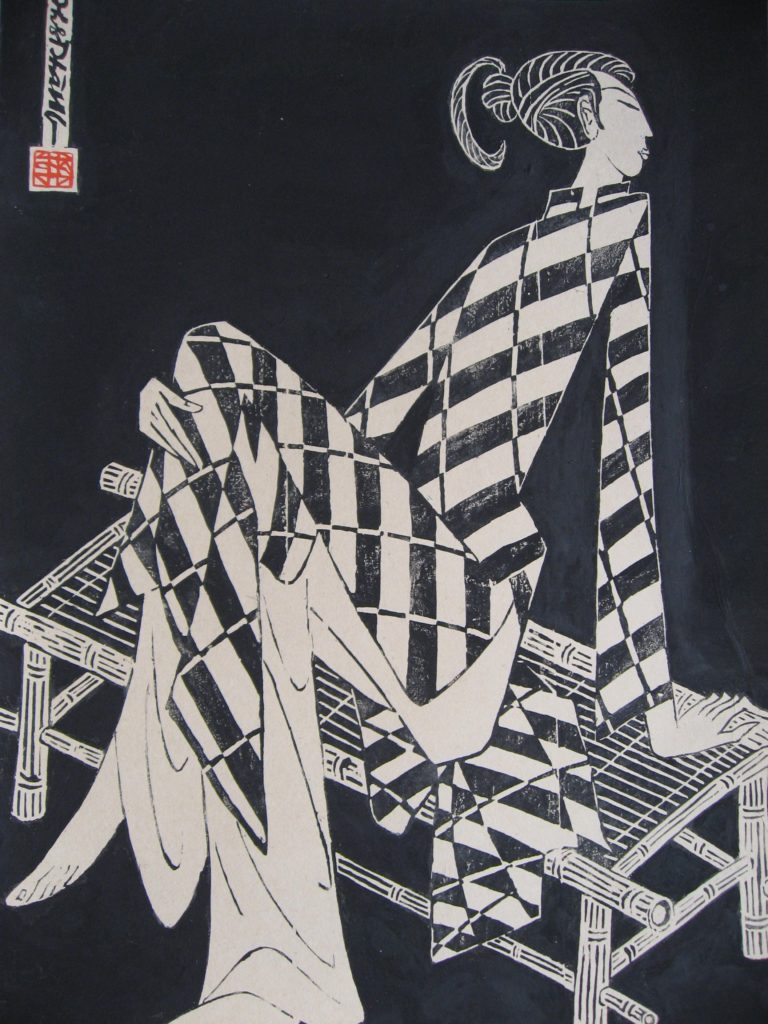
Phung Pham, Miss Mai (2004). Courtesy of Raquelle Azran Vietnamese Contemporary Fine Art.
You’ll be participating in several fairs this fall—Asian Art London, the Hamburg Art Fair, and the Hampstead Art Show. Can you give me a preview of what you’ll be bringing to the fairs?
In Asian Art London, where I show annually, I feature themed exhibitions, displaying the rarest and most precious works in my collection. This year’s exhibition is titled “Indochine Scenes: Vietnamese and French Paintings from the 1900s,” and includes work by French peintres voyageurs, such as Marie-Antoinette Boullard-Devé, Marcel Bernanose, and Louis Rollet, as well as works by renowned 20th century Vietnamese artists Le Pho, Luu Cong Nhan, Nguyen Tu Nghiem, Phung Pham, and Vinh Phoi.
In the Hamburg and Hampstead art fairs, I show more contemporary work that appeals to collectors, is still affordable, and offers the reward of enjoying outstanding artwork in one’s home.

Vu Dinh Tuan, Blooms of Desire (2017). Courtesy of Raquelle Azran Vietnamese Contemporary Fine Art.
Many dealers have a complicated relationship with art fairs. Do you enjoy them? How has participating in them changed the way you do business?
I do enjoy art fairs, as they allow me to spread the gospel of Vietnamese contemporary fine art. My original entrée into the London art scene, back in 2002, was via the brash new Affordable Art Fair. I brought two crates of framed work from Hanoi, not knowing how the London reception would be. We sold out in two days—and were scolded by the unhappy organizers for displaying empty walls. We’ve come close often since then, but never in two days! Fairs allow me to introduce young and emerging artists to a wider audience and are often excellent indicators of an artist’s future success.
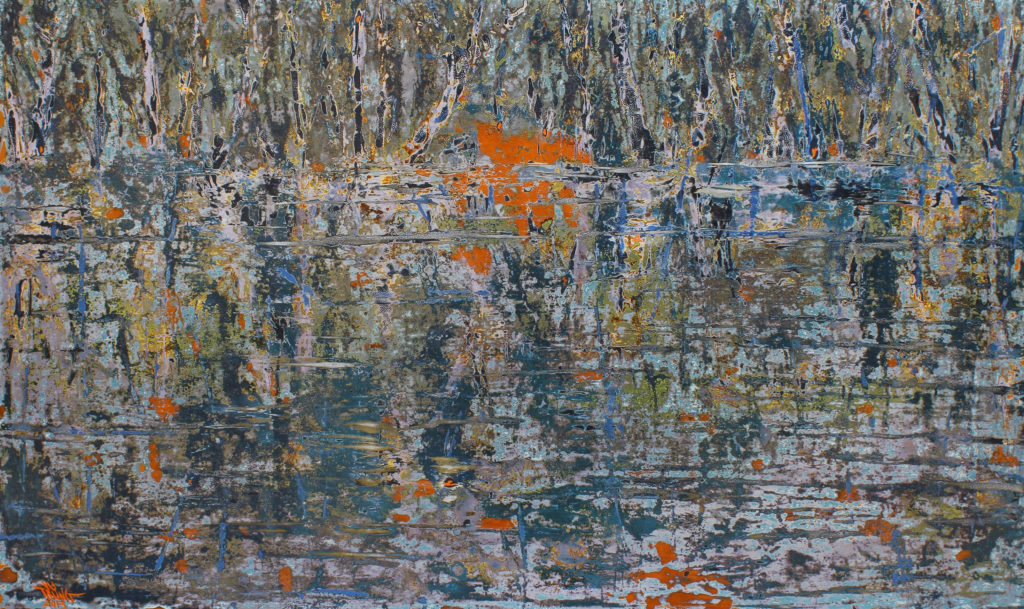
Vu Duc Trung, Sunbeams and Trees (2013). Courtesy of Raquelle Azran Vietnamese Contemporary Fine Art.
You’re also a fiction writer and essayist. Are you working on anything now?
My fiction writing has taken a temporary back seat to the demands of full-time collecting, curating, and exhibiting. I content myself in the meantime with writing art-related articles. I’m confident that the writing will again share center stage in the future.
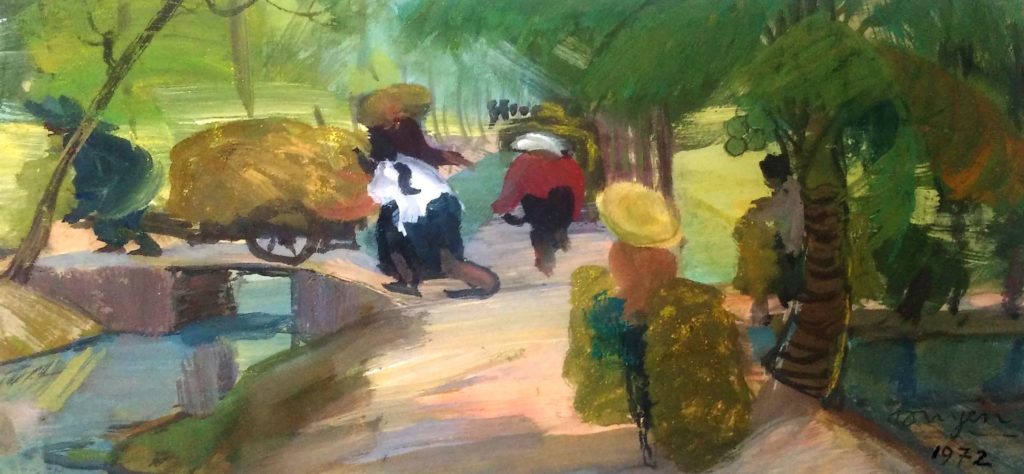
Ngo Van Duyen, Working in Fields (1972). Courtesy of Raquelle Azran Vietnamese Contemporary Fine Art.
How has writing influenced your relationship to art (and vice versa)?
Writing and art are both means of self-expression, but the work—whether a short story or a watercolor painting—becomes meaningful as a cultural phenomenon only when experienced by others. No matter how beautiful a work of art or how perfectly crafted a piece of fiction, until they are shared with an audience they remain individual products lacking cultural significance.
My work as a collector, curator, and gallerist is to bring together the art and the audience, to enable dialogue and discussion so that the work achieves a life independent of its creator and becomes a source of beauty and inspiration.
